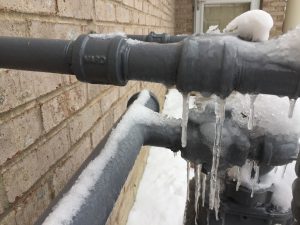Critical Approaches for Preventing Frozen Plumbing in Winter
Critical Approaches for Preventing Frozen Plumbing in Winter
Blog Article
They are making a number of good points on 6 Ways to Prevent Frozen Pipes in general in the content below.

Cold weather can damage your plumbing, specifically by freezing pipelines. Here's just how to stop it from happening and what to do if it does.
Introduction
As temperatures drop, the danger of frozen pipelines increases, potentially resulting in costly repairs and water damage. Understanding just how to stop frozen pipes is important for house owners in chilly environments.
Understanding Frozen Pipes
What creates pipelines to freeze?
Pipelines ice up when revealed to temperatures listed below 32 ° F (0 ° C) for extended periods. As water inside the pipelines ices up, it broadens, taxing the pipeline walls and possibly creating them to burst.
Threats and problems
Frozen pipelines can cause water supply interruptions, building damages, and costly repair services. Ruptured pipes can flooding homes and cause extensive architectural damages.
Signs of Frozen Piping
Identifying icy pipes early can stop them from rupturing.
How to identify frozen pipes
Try to find decreased water circulation from faucets, uncommon smells or sounds from pipelines, and visible frost on exposed pipelines.
Prevention Tips
Protecting susceptible pipes
Wrap pipelines in insulation sleeves or use warmth tape to safeguard them from freezing temperature levels. Concentrate on pipes in unheated or external locations of the home.
Heating techniques
Keep interior areas effectively heated, specifically locations with pipes. Open up cabinet doors to allow cozy air to flow around pipelines under sinks.
Protecting Exterior Pipes
Garden hoses and exterior faucets
Separate and drain pipes yard hoses prior to winter season. Mount frost-proof spigots or cover exterior taps with protected caps.
What to Do If Your Pipelines Freeze
Immediate actions to take
If you suspect frozen pipes, keep taps open up to ease pressure as the ice melts. Make use of a hairdryer or towels taken in warm water to thaw pipelines gradually.
Long-Term Solutions
Structural adjustments
Consider rerouting pipelines far from exterior walls or unheated locations. Add additional insulation to attics, cellars, and crawl spaces.
Updating insulation
Invest in top quality insulation for pipes, attic rooms, and wall surfaces. Proper insulation aids maintain regular temperatures and decreases the threat of icy pipes.
Verdict
Stopping frozen pipes requires positive actions and fast responses. By understanding the reasons, signs, and preventive measures, property owners can shield their pipes throughout winter.
5 Ways to Prevent Frozen Pipes
Drain Outdoor Faucets and Disconnect Hoses
First, close the shut-off valve that controls the flow of water in the pipe to your outdoor faucet. Then, head outside to disconnect and drain your hose and open the outdoor faucet to allow the water to completely drain out of the line. Turn off the faucet when done. Finally, head back to the shut-off valve and drain the remaining water inside the pipe into a bucket or container. Additionally, if you have a home irrigation system, you should consider hiring an expert to clear the system of water each year.
Insulate Pipes
One of the best and most cost-effective methods for preventing frozen water pipes is to wrap your pipes with insulation. This is especially important for areas in your home that aren’t exposed to heat, such as an attic. We suggest using foam sleeves, which can typically be found at your local hardware store.
Keep Heat Running at 65
Your pipes are located inside your walls, and the temperature there is much colder than the rest of the house. To prevent your pipes from freezing, The Insurance Information Institute suggests that you keep your home heated to at least 65 degrees, even when traveling. You may want to invest in smart devices that can keep an eye on the temperature in your home while you’re away.
Leave Water Dripping
Moving water — even a small trickle — can prevent ice from forming inside your pipes. When freezing temps are imminent, start a drip of water from all faucets that serve exposed pipes. Leaving a few faucets running will also help relieve pressure inside the pipes and help prevent a rupture if the water inside freezes.
Open Cupboard Doors
Warm your kitchen and bathroom pipes by opening cupboards and vanities. You should also leave your interior doors ajar to help warm air circulate evenly throughout your home.

I'm just very excited about Helpful Tips to Prevent Frozen Pipes this Winter and I'm hoping you enjoyed reading the piece. In case you enjoyed reading our post please consider to share it. Thanks for your time spent reading it.
Get Estimate Report this page